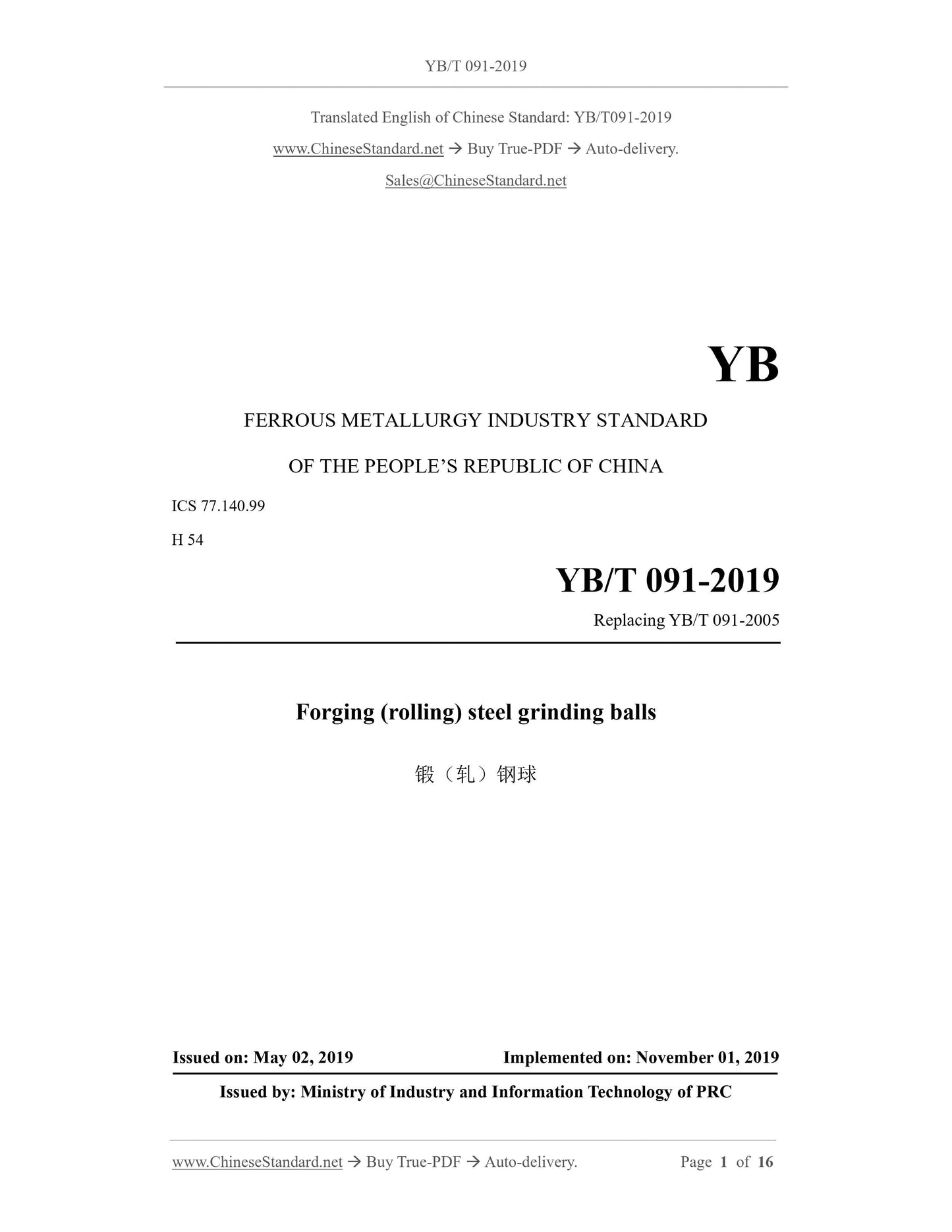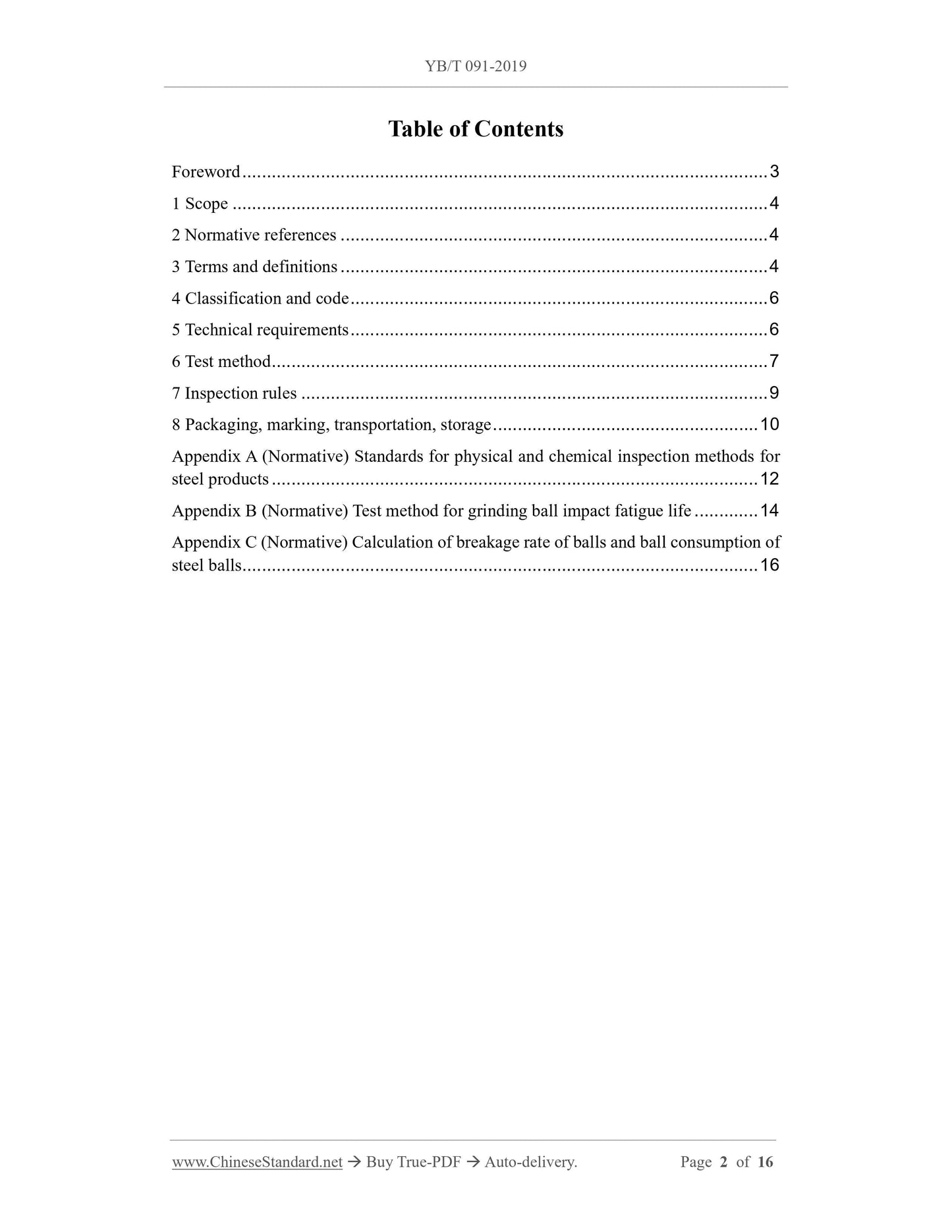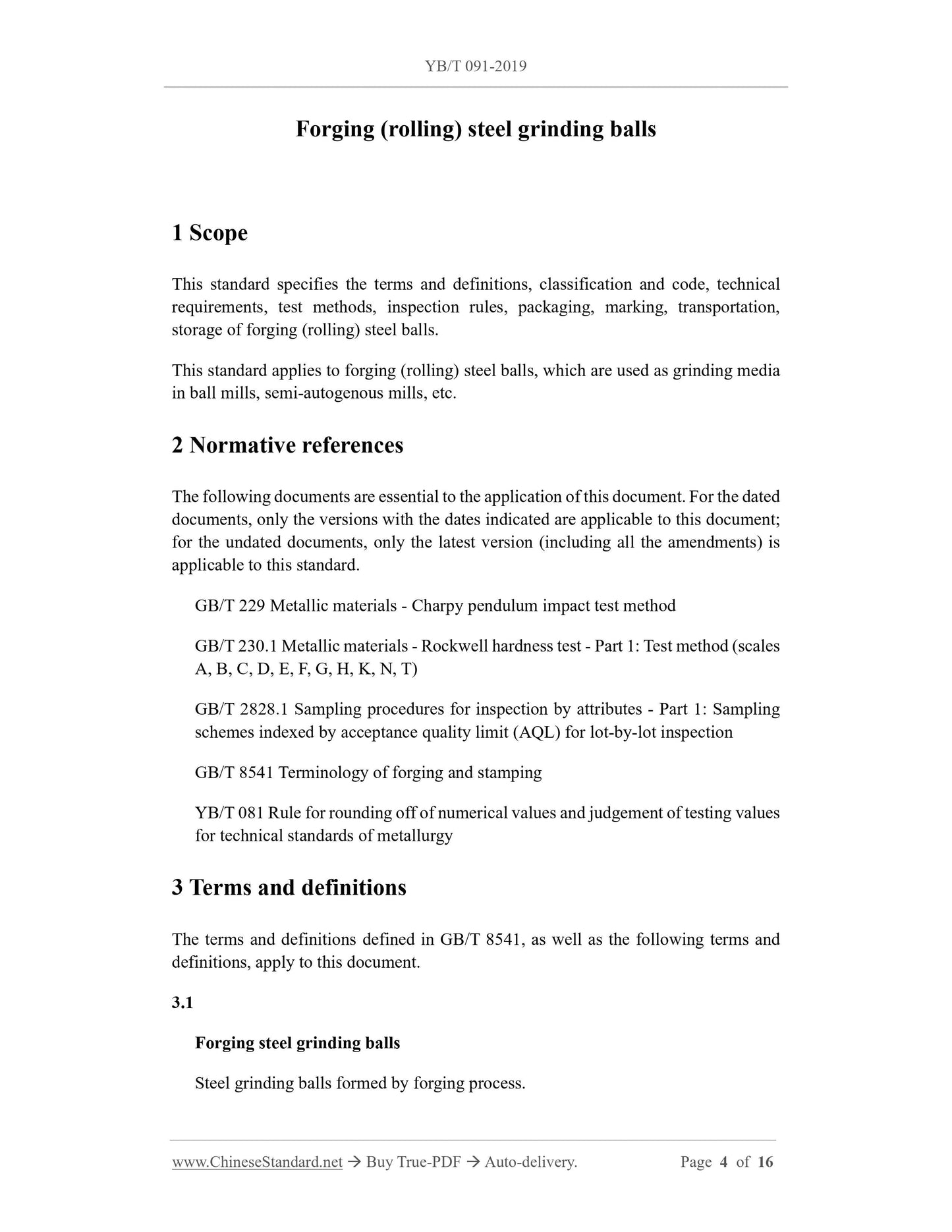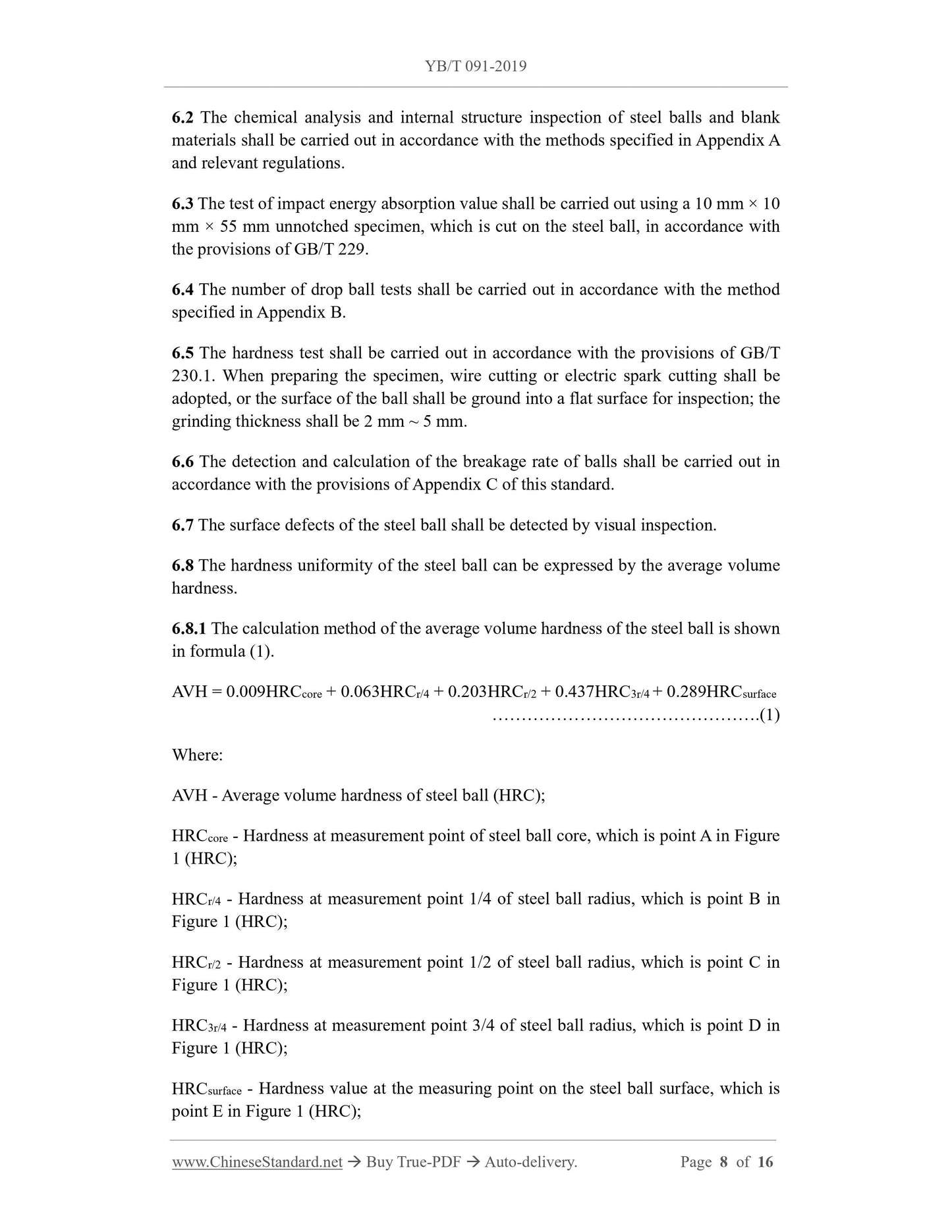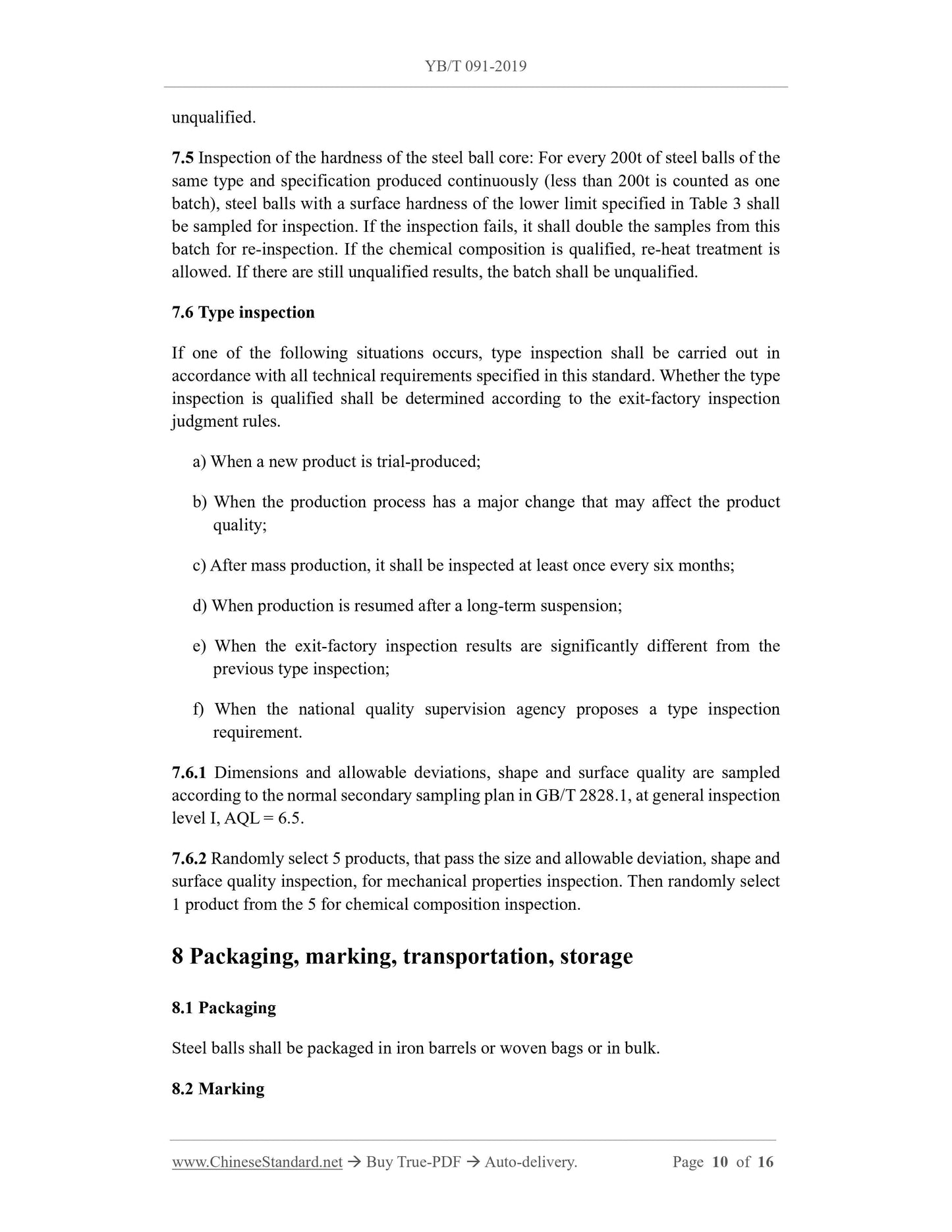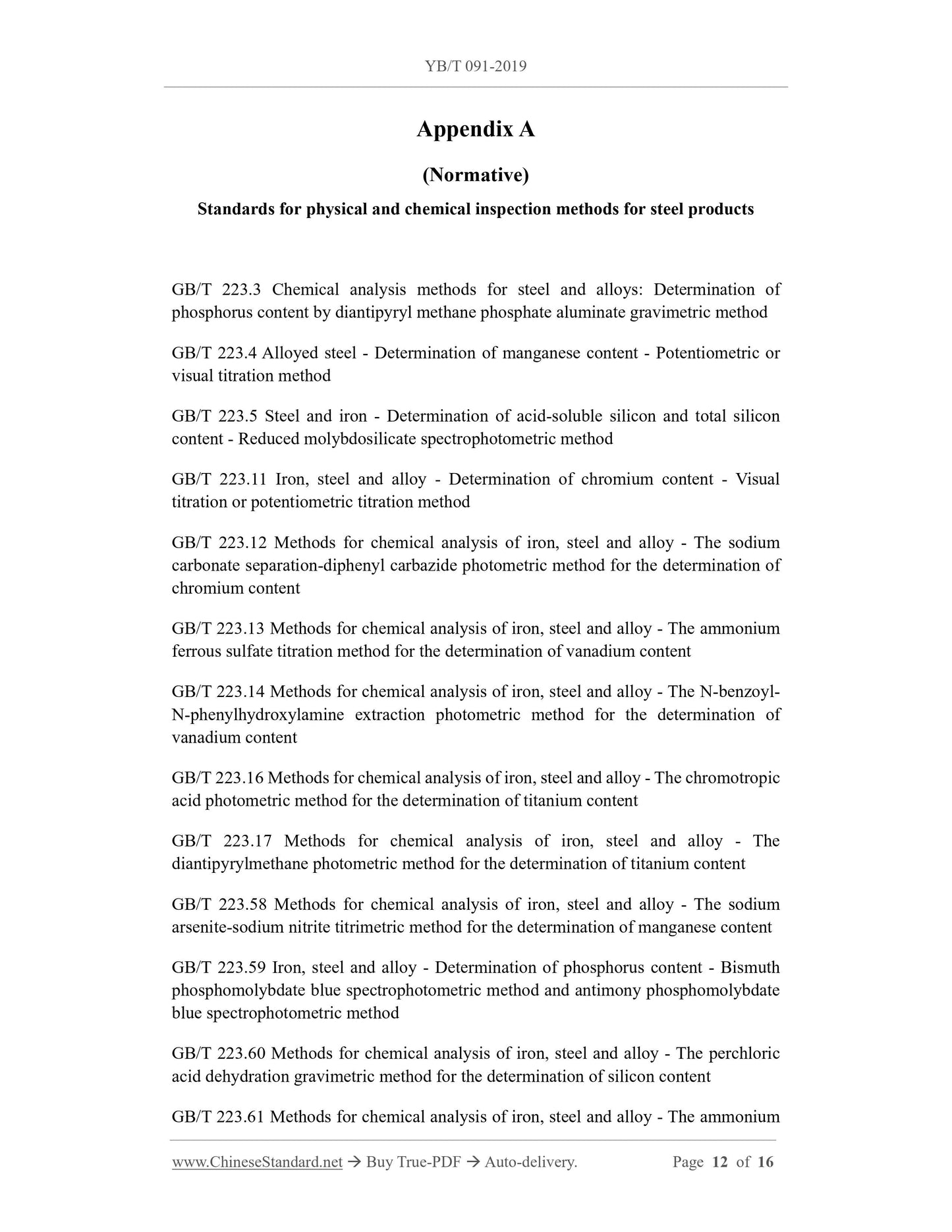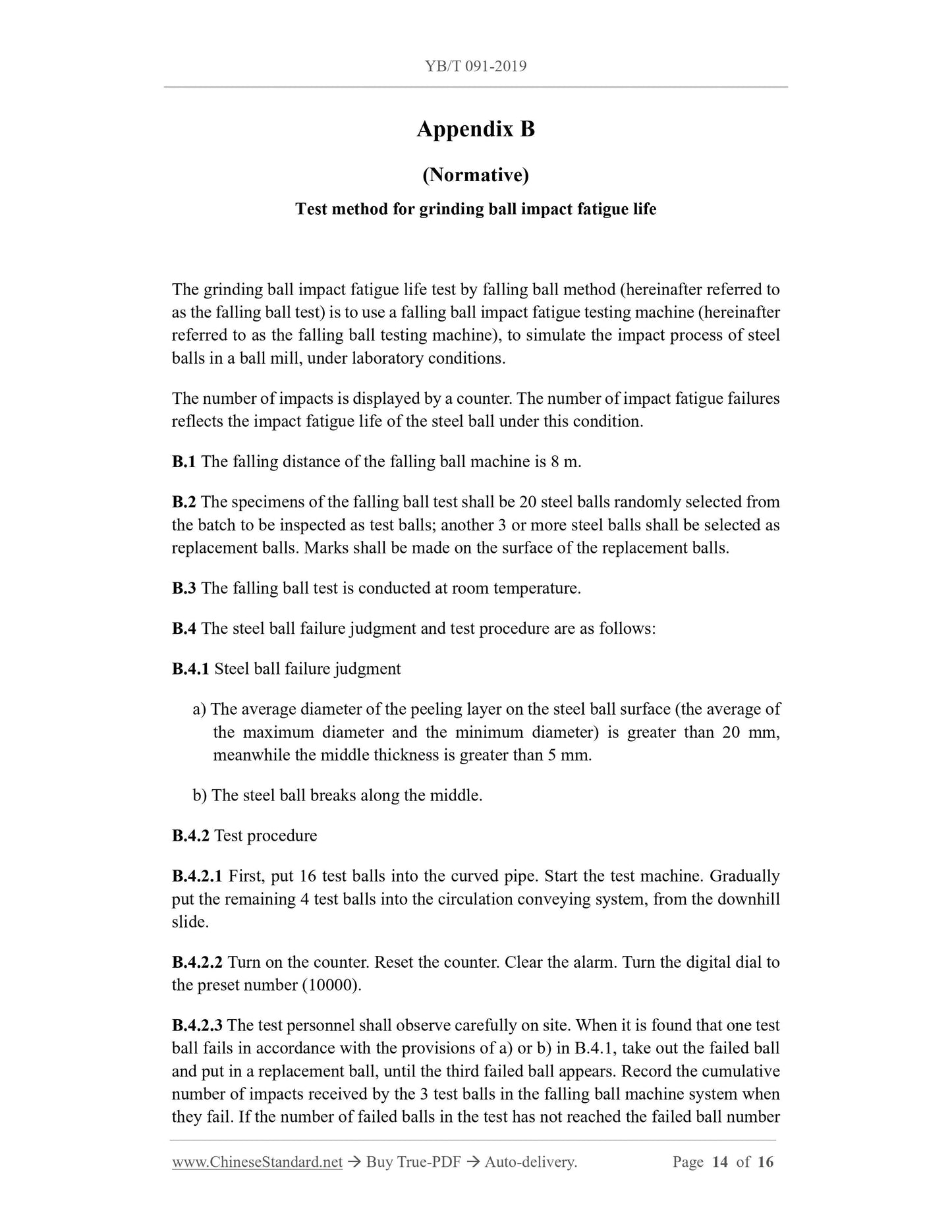1
/
of
7
www.ChineseStandard.us -- Field Test Asia Pte. Ltd.
YB/T 091-2019 English PDF (YB/T091-2019)
YB/T 091-2019 English PDF (YB/T091-2019)
Regular price
$185.00
Regular price
Sale price
$185.00
Unit price
/
per
Shipping calculated at checkout.
Couldn't load pickup availability
YB/T 091-2019: Forging (rolling) steel grinding balls
Delivery: 9 seconds. Download (and Email) true-PDF + Invoice.Get Quotation: Click YB/T 091-2019 (Self-service in 1-minute)
Newer / historical versions: YB/T 091-2019
Preview True-PDF
Scope
This standard specifies the terms and definitions, classification and code, technicalrequirements, test methods, inspection rules, packaging, marking, transportation,
storage of forging (rolling) steel balls.
This standard applies to forging (rolling) steel balls, which are used as grinding media
in ball mills, semi-autogenous mills, etc.
Basic Data
| Standard ID | YB/T 091-2019 (YB/T091-2019) |
| Description (Translated English) | Forging (rolling) steel grinding balls |
| Sector / Industry | Ferrous Metallurgy Industry Standard (Recommended) |
| Classification of Chinese Standard | H54 |
| Classification of International Standard | 77.140.99 |
| Word Count Estimation | 10,196 |
| Date of Issue | 2019 |
| Date of Implementation | 2019-11-01 |
| Issuing agency(ies) | Ministry of Industry and Information Technology |
| Summary | This standard specifies the terms and definitions, classification and code, technical requirements, test methods, inspection rules, packaging, marking, transportation and storage of forged (rolled) steel balls. This standard applies to forged (rolled) steel balls used as grinding media in ball mills and semi-autogenous mills. |
Share
